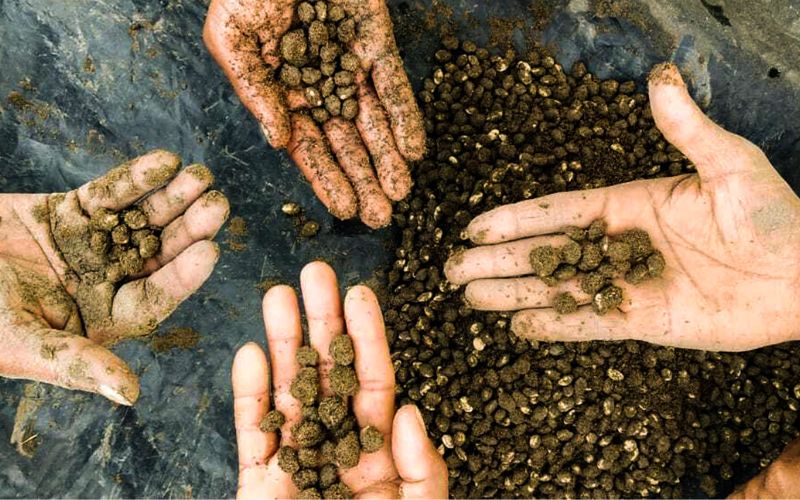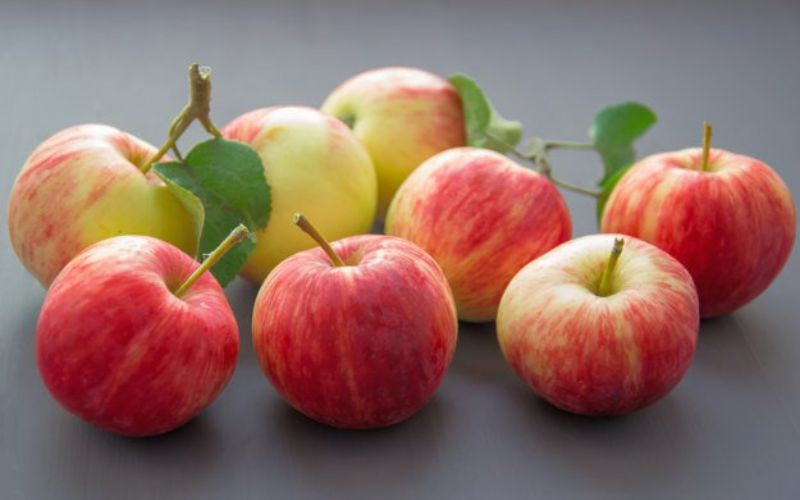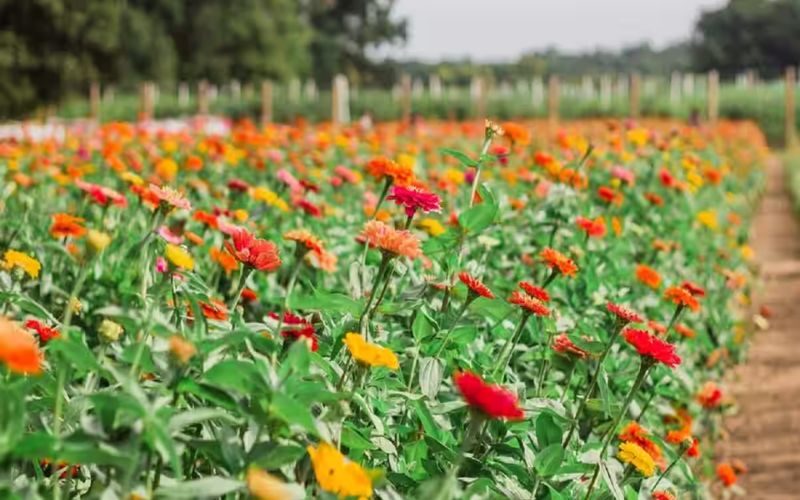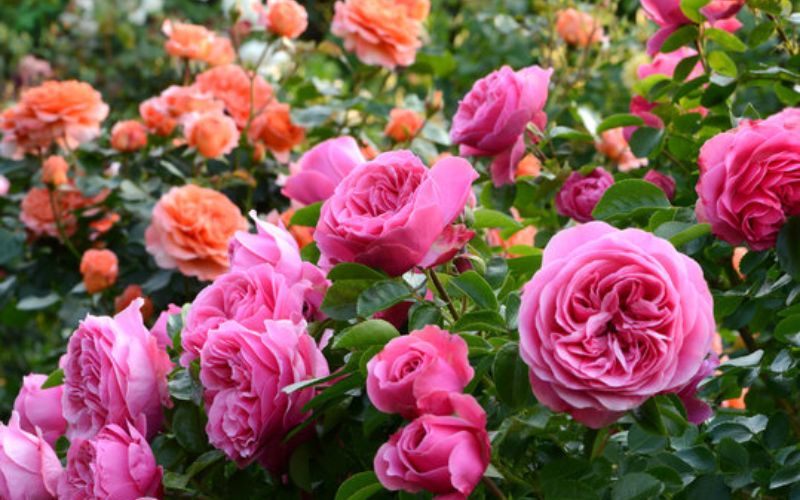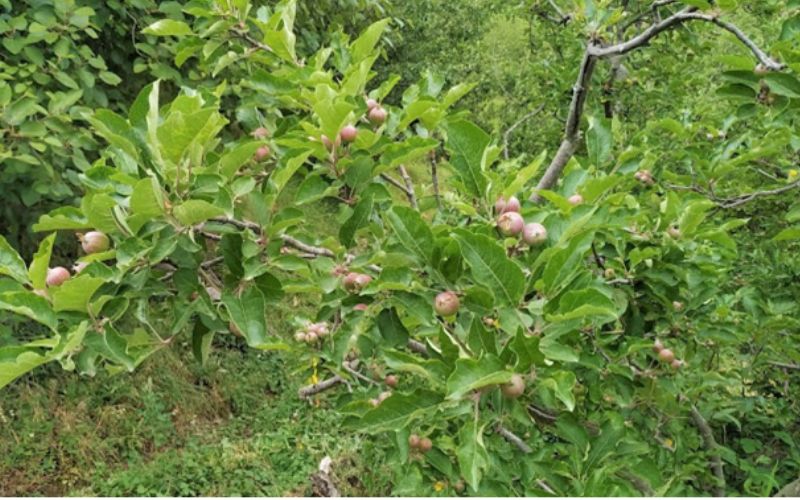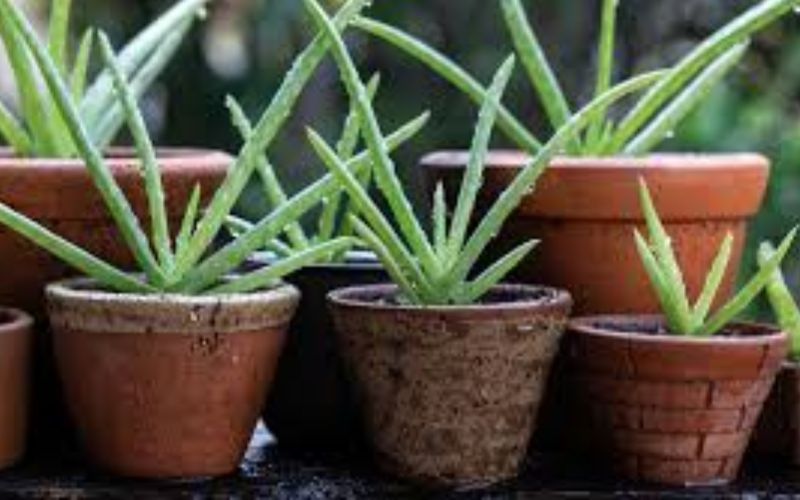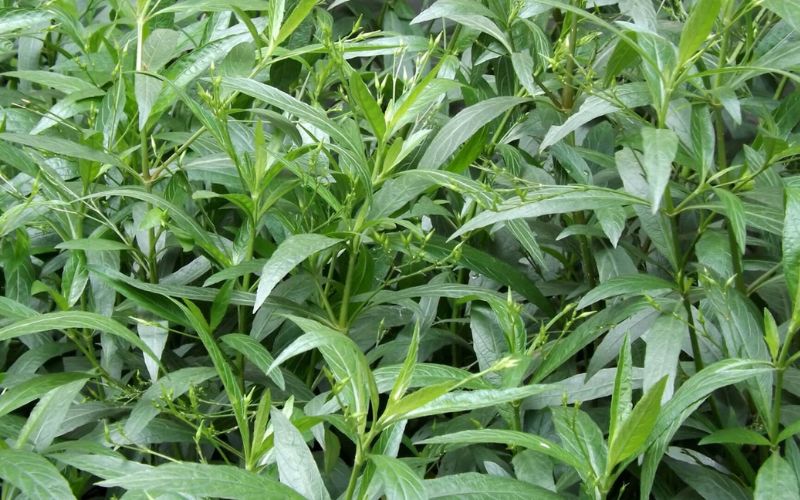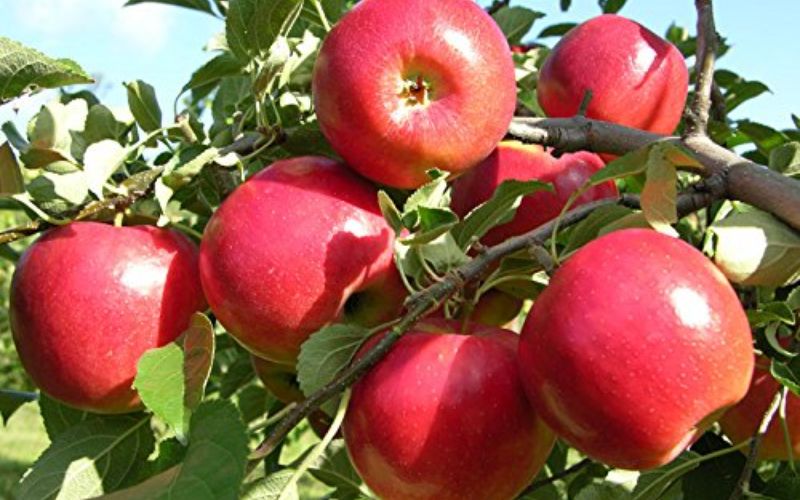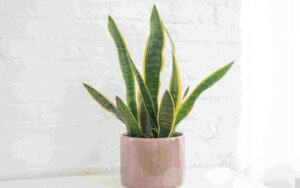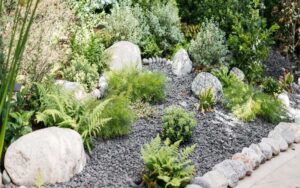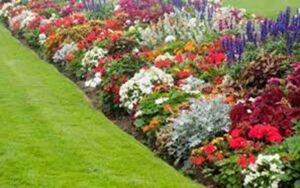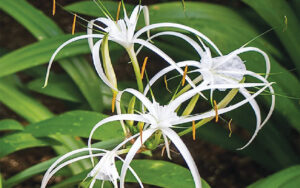Beautiful Orchid: Dendrobium
Dr. Amar Singh
Introduction
Dendrobium is a genus of mostly epiphytic and lithophyte orchids in the family Orchidaceae. It is a very large genus, containing more than 1,800 species that are found in diverse habitats throughout much of south, east and southeast Asia, including China, Japan, India, the Philippines, Indonesia, Australia, New Guinea, Vietnam and many of the islands of the Pacific. Orchids in this genus have roots that creep over the surface of trees or rocks, rarely having their roots in the soil. Up to six leaves develop in a tuft at the tip of a shoot and from one to a large number of flowers are arranged along an unbranched flowering stem. Several attempts have been made to separate Dendrobium into smaller genera, but most have not been accepted by the World Checklist of Selected Plant Families.
Whenever we think of flowers, Orchids bloom in mind as if we could grow them in our own place. Orchids occupy a prime position when it comes to valuation or importance in trade. Orchids are the best flowers suited for cut flower purposes because of their long shelf life and vivid and bright colours. The Indian Floriculture industry is still not at its full potential not even close to potential. Orchid cultivation on the other hand is still very less known. Indians only think of roses but never think of cultivating orchids. Major crops in the floriculture trade are Rose, Gerbera, Carnation, Tuberose, Marigold, Lilly etc. But orchid is not even on the list. Orchids occupy 10% of the global fresh-cut flower trade. There is a huge demand for orchid-cut flowers in India. For this demand, India imports cut flower orchids from Netherlands and Thailand worth Rs 3402.36 crore (2014-15) as compared to Rs 299.09 crore (2008-09). A single cut flower of Sonia variety of Dendrobium orchid costs Rs 50 per flower while its pot costs Rs 500. Orchids are nature’s most beautiful flowers with the longest flowering period and the highest no. of flowers per plant. But their cultivation seems to be very restricted to only their origin place, i.e., North East, Western Ghats, Himalayan Region and South India. They (Orchids) have the potential to change the floriculture trade on the mainland, i.e., in North India. Some scientists have earlier tried to do some work and they find orchid as a potential cut flower crop in Northern conditions under subtropical climate. Under the family Orchidaceae, Dendrobium, Venda, Phalaenopsis and Cymbidium have the potential to grow in varied agroclimatic conditions. Among these, Dendrobium is very promising as it has growing conditions that match, mostly the North Indian conditions. Orchids need a warm climate. Day temperature should be more than 18°C. Night temperature should not be less than 12°C. Though they can tolerate temperatures as less as 4°C, with some injuries on roots and leaves the plants remains alive. If humidity is maximum, as required, then the light should be bright and long. It should not be direct. Instead, it should be shaded partially depending upon the type of plant grown, ranging from 46% to 80% through shaded nets. Every plant requires continuous fresh air to breathe. So orchids are no exception to this. Orchid plants are heavy feeders. They need fertilization on weekly basis in a 10:10:10 ratio in liquid form. Orchid plants are sensitive to water logging but they can tolerate short dry spells. The plant can recover from short dry spells easily but not from water logging because chances of crown rot.
Medicinal uses
They are a source of tonic, astringent, analgesic, antipyretic, and anti-inflammatory substances, and have been traditionally used as medicinal herbs in the treatment of a variety of disorders, such as nourishing the stomach, and enhancing the production of body fluids or nourishing.
Some Dendrobium species are cultivated as medicinal plants. The noble dendrobium (D. nobile) for example is one of the 50 fundamental herbs used in traditional Chinese medicine, where it is known as shíhú or shíhúlán.
The 1889 book ‘The Useful Native Plants of Australia records that Dendrobium canaliculatum was called “yamberin” by the Indigenous People of Queensland, Australia and that “The bulbous stems, after being deprived of the old leaves are edible (Thozet).
How to Grow
General Information
Dendrobium is a Genus of orchids in the family Orchidaceae. There are over 1200 recognised species of Dendrobium orchids and the floral trade has created an abundance of hybrids. Some species, for example, Dendrobium Nobile have been hybridized hundreds of times. Dendrobium orchids grow in very many different habitats, so it is impossible to generalise their requirements. You can find wild Dendrobium orchids in the Australian outback as well as in an Asian tropical forest and the foothills of the Himalayan Mountains. There are tropical rainforest Dendrobium, and species living in deciduous woodland at altitudes over 3000 Metres. To offer correct Dendrobium care, you will need to consider your plant’s natural environment. But sometimes information is scarce, or plants can be misidentified. It is important to pay attention to how your plant responds to the conditions in which you are keeping it. Below are some general, and more specific guidelines for looking after Dendrobium orchids as houseplants. Dendrobium orchids are epiphytic or lithophytic in the wild, which means they grow attached to other plants (typically trees) or on rocks and stones. They generally do not root into the ground, so don’t have access to the ground moisture as is the case with typical terrestrial plants. They receive their moisture from rain landing upon their roots, and humidity in the air. For proper Dendrobium care, we must water them adequately, but they must be allowed to dry between soakings. It is important that you get detailed care information for your certain type of Dendrobium because the care can greatly vary depending on the type you have.



The General Classification
Dendrobium orchids can be divided into two distinct types, the ‘Hard Cane’ plants, typified by Dendrobium Phalaenopsis, and the ‘Soft Cane’ species, typified by Dendrobium Nobile.
1. Hard Caned or Dendrobium Phalaenopsis Type
This Dendrobium is so-named due to certain similarities it has to the better known Phalaenopsis Orchid. It has similar, thick, waxy leaves, and the somewhat flowers appear on a spike – the two plants are not actually related. This species is very widely hybridized, with hundreds of interesting and attractive varieties available. Hard-caned Dendrobiums have tall pseudobulbs that are very thin and their leaves are generally a little darker in colour than the soft-caned. Hardcaned Dens are evergreen and often keep their leaves for many years before they drop them. Hardcaned Dens grow spikes from the top of the cane and produce gorgeous flower sprays. This ‘hard cane’ Dendrobium hails from tropical forests in the very northeast corner of Australia and New Guinea, so has less seasonal variation than Dendrobium Nobile, It likes a warm bright environment, and regular feeding during the growing period; the winter rest period does not need a significant temperature drop to encourage flowering, though feeding should stop, and watering should be reduced; perhaps replaced by misting unless the leaves or canes start to shrivel.
2. Soft Caned or Dendrobium Nobile Type
This is a very well-known orchid, with huge numbers of cultivars available, with some very attractive flowers. Orchids of this type are often referred to as ‘soft cane’. Generally easy to care for, and therefore very popular. Unlike Dendrobium Phalaenopsis flowers grow from the plant’s canes, rather than from a flower spike. This species is also characterised by its thin flexible leaves; quite unlike the foliage of Dendrobium Phalaenopsis. Small buds appear on each node of the cane towards the end of winter. However, getting plants of this species to flower does require a little attention, and consideration of their natural growing conditions. Care for Dendrobium Nobile indoors is not as simple as caring for some tropical orchids with less seasonal variation in temperature. The natural habitat of Dendrobium Nobile orchids is the deciduous forests in the foothills of the Himalayas, but also China, Vietnam, Thailand, Laos and Myanmar. They grow often at higher altitudes than many other orchid Hard Caned or Phalaenopsis Dendrobium species and as such can tolerate significantly cooler temperatures than plants that inhabit lowland equatorial rain forests. If these plants do not experience a cool winter they will not flower, rather produce Plantlets (keikis) instead of buds. The forests within which they live lose their leaves in winter, subjecting the plant to very bright, but cold and dry conditions. So to exhibit the best care, Dendrobium Nobile should be given a winter break: this can be simulated by leaving these plants outdoors for a few weeks after flowering, temperatures as low as 10°C are fine; naturally don’t let these plants experience any frost. Stop feeding and watering the plant over the winter period but position them with good light.
Light Requirements
Dendrobiums Phalaenopsis need lots of light, but not direct sun. A lightly shaded south window is best. These plants like strong, natural sunlight. They love full morning and late afternoon sun but do best if the light is somewhat filtered between 11 am and 3 pm. They will grow in lower-light conditions, but it is unlikely the plant will bloom well. The appearance of keikis often means the plant isn’t getting enough light. On the other hand, if you see yellow leaves you may have given the plant too much direct sunlight.
Temperature Requirements
They are considered warm-house plants by growers, meaning they favour conditions in a warm greenhouse. The temperature for these plants should be above 60 degrees Fahrenheit at all times. Dendrobium Phalaenopsis type orchids do well in daytime temperatures somewhere between 24°C to 30°C and night temperatures between 16°C to 18°C. They will do best when there is an 8°C to 11°C difference between day and night temperatures.
Water Requirements
These plants are evergreen and do not require a rest period as some orchids do. They should be watered as they approach dryness. This can vary from 2 to 5 days, depending on humidity, air movement, the amount of light they receive, the potting media used, the type of pot (Plastic or Clay) and the size of the pot. After the growing season, cut the water back somewhat but do not suspend watering. Water your orchids in the morning so that the leaves are dry before night. Do not use salt-softened or distilled water. Let the water run through the plant for a minute or so. Be sure to let the plant drain completely. Don’t leave them in a tray of water as that can rot the roots. Over-watering is more harmful to dendrobium orchids than underwatering. Yellowing Dendrobium leaves can be a sign of too much or too little water.
Humidity Requirements
The ideal humidity range to grow your Dendrobium Phalaenopsis is 50-60 % humidity. Brown leaf tips are a sign that the air is too dry for your orchid. Use a shallow tray of pebbles filled with water (Humidity Tray) to increase humidity around your plants. Be sure the pot does not sit in water as this will rot the roots. Give your plants room for air to circulate around them. Crowding of plants can lead to problems with insect infestations and fungus. A small fan will help provide good air circulation around your plants.
Blooming
The bloom sprays appear from the top of the canes when mature and usually have from 5-20 flowers that last from one to three months. You can use the sprays to use as cut flowers for arrangements. These bloom several times throughout the year, depending on conditions. Some are scented. When the blooms are done, cut the sprays just where they meet the canes. Canes have the potential of producing several sprays from the upper leaf axils. “To help provoke a flower spike, slightly drop the water and night time temperature” However, you should not remove any old leafless canes, as they store nutrients and water to keep the plant healthy. Older canes will sometimes flower or produce tiny plantlets, called kiekies that can be potted up on their own after they develop roots.
Fertilizer Requirements
Dendrobium Phalaenopsis need to be fertilised regularly when they are in active growth. Fertilising every two to three weeks during the summer months and once a month in the winter should suffice.
Recommended Fertilizers:
Media and Propagation these are naturally epiphytic orchids that will thrive in hanging baskets with little or no potting media or they will do well in fast-draining media as a windowsill plant. In fact, they do best in a smaller pot with only an extra inch beyond the root ball. Orchids don’t grow in soil, but rather in a special mixture that mimics their environment in
Balanced Fertilizer for Growth:
19-19-19 (NPK) – 1-2 grams per litre of water – Spray once every alternative week (14 Days)
High-Phosphorus Fertilizer for Blooming:
0-52-34 (NPK) – 1-2 grams per litre of water – Spray on every alternative week (14 Days)
Potting media and Propagation
Choose a suitable orchid potting medium which can be locally made available, mostly containing Peat moss, Perlite, Fir bark, Pine Bark, Charcoal or Cocopeat as a whole or as Ingredients. Repotting should be done only as the mix breaks down (every 2 to 3 years) or as the plant outgrows the pot or once the potting medium remains soggy and no longer drains properly. Before repotting, you should always remove all of the old potting media and trim away the damaged roots with a sterile cutting tool. If your plant has at least four canes that are bearing healthy leaves, you can divide it. Each division needs at least three canes/growths per division. Use a large stiff knife to cut through the rhizome and root mass, attempting to keep the root mass intact as much as possible. Remove all the growing medium from the root mass, and then cut away any long, dangling or dead roots. Put the plant in a pot in the appropriate size it shouldn’t be too larger. Add orchid potting media around the roots, so the junction of the plant and the root is a half-inch below the mixture. Pack the potting medium firmly, and wait one week to water it thoroughly.
Pests and other Dendrobium-related problems
Fungal and Bacterial Diseases of Dendrobiums are common because of the levels of humidity they need to survive. Fungal agents cause problems like root rot, leaf spots, leaf blights and distortion in flowers.


